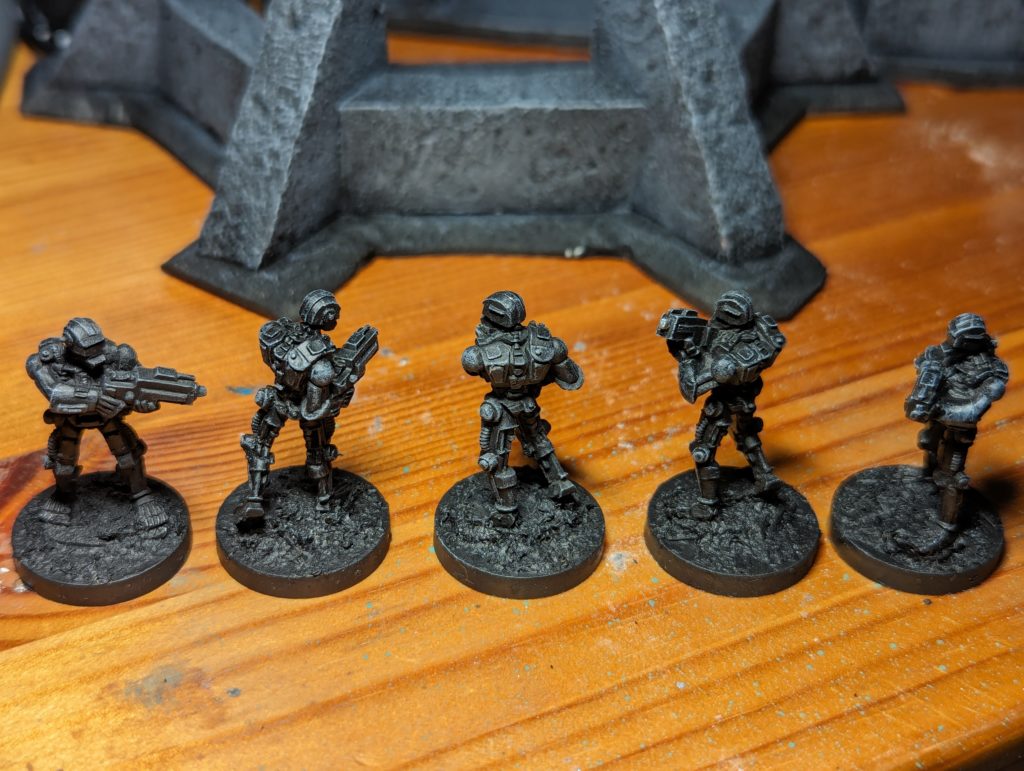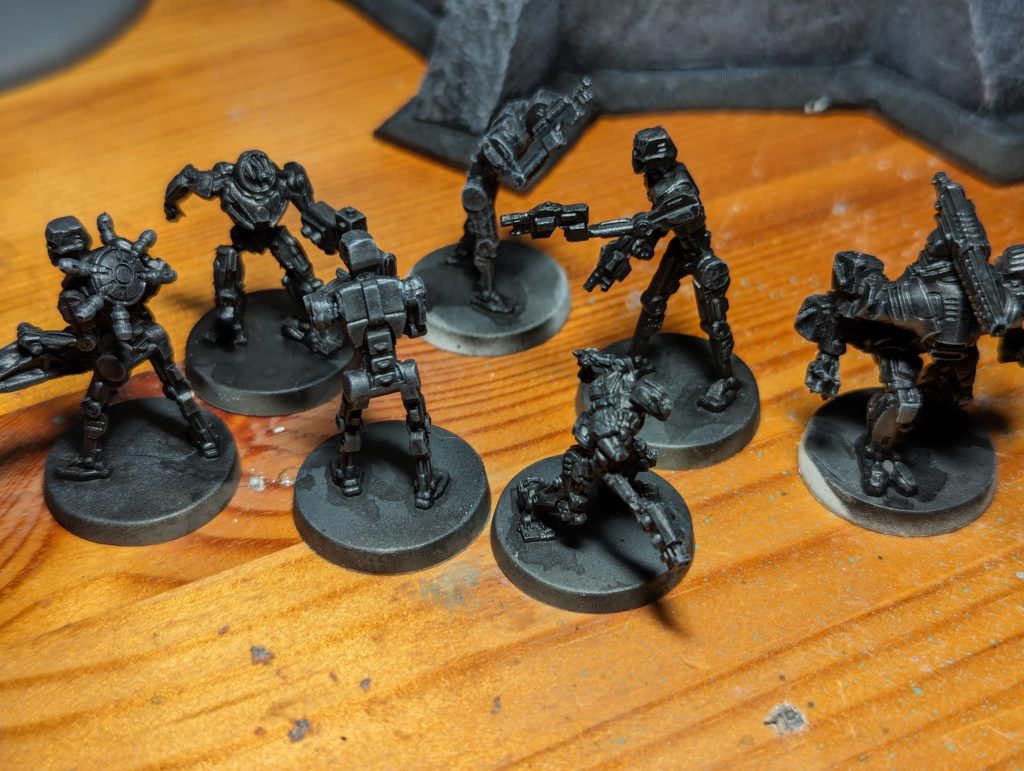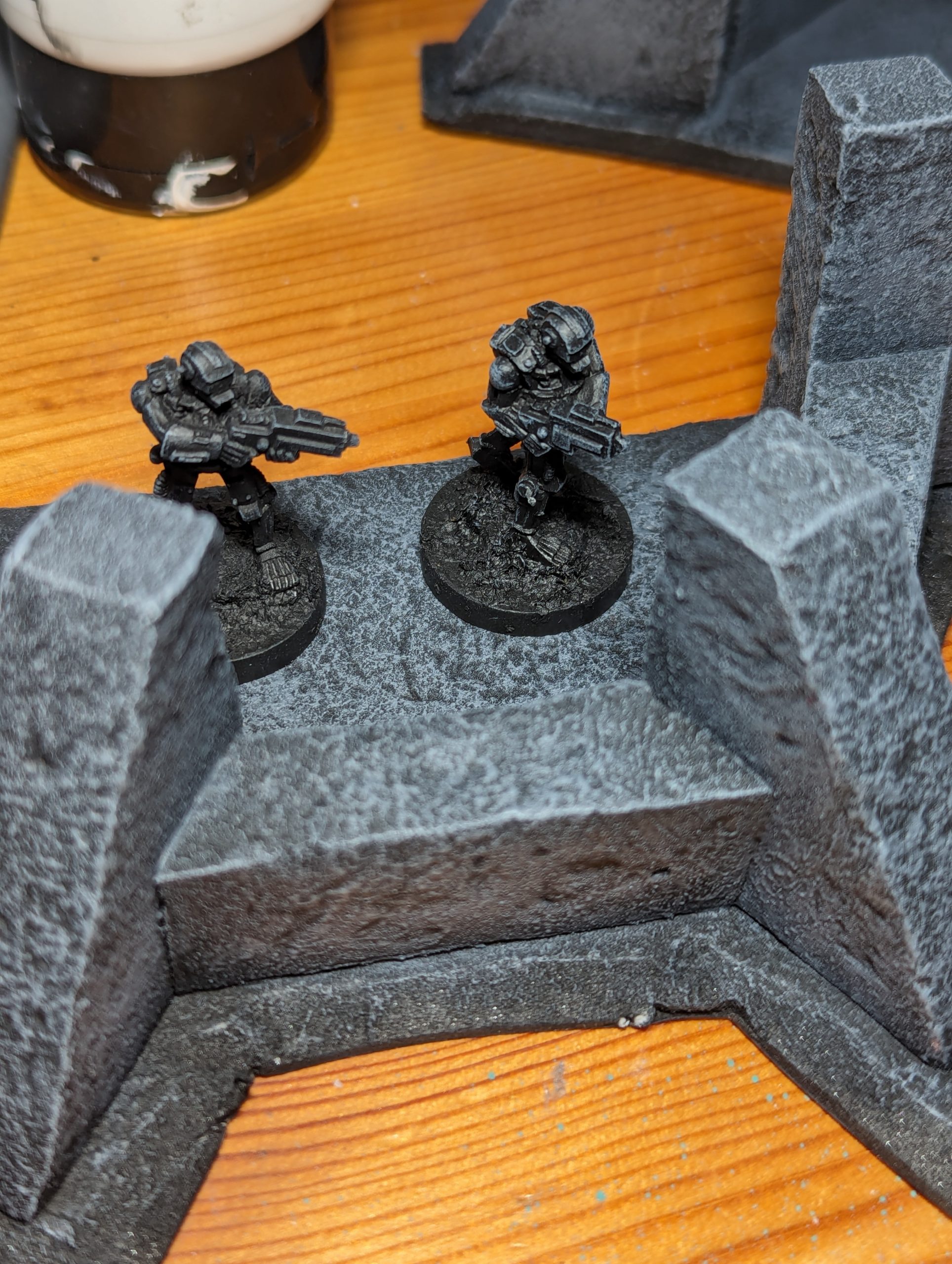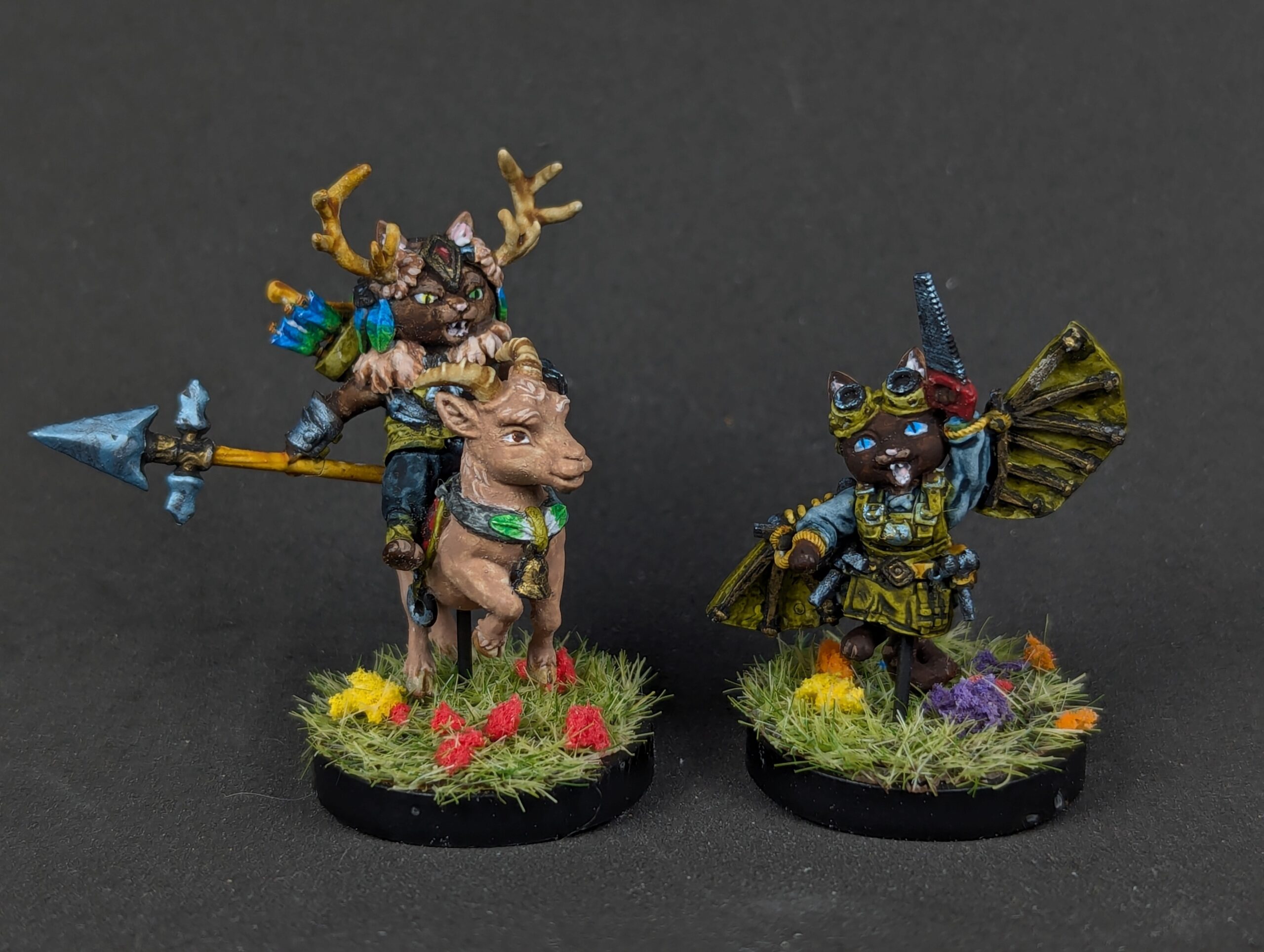


It was a monochrome day today. For my tinfoil-ball-weathered “concrete” bunkers I made a texture paint out of black paint, mod podge, and baking soda. I applied it as light as I could, though I still got a couple drips I’ll cover later with greeblies. Then I airbrushed everything in black, and found out what Vallejo primer smells like, and thought about pulling my covid masks out of storage.
This post is about texture and overbrushing and drybrushing. The bunkers and both gangs of robots were painted with exactly the same black and white paints in the same mixes, from a mid grey to a light grey, and texture creates a very, very different look. The bunker got a heavy overbrush of the mid grey for 90%+ coverage, which also went on the robots very lightly as a soft edge highlight. Then I took a lighter grey and gave the bunker a drybrush so heavy it was nearly another overbrush, very carefully so I wasn’t streaking, for about a 50% coverage or so. I used that same lighter grey as the robot edge highlight with a whisper of a touch and a very dry brush. Then the bunker got a light drybrush with the lightest grey for maybe 15% coverage.
All of these will be getting more work, soon. The concrete needs brown and black washes for grime, maybe some green mold and definitely some high gloss red splatter. The robots are begging for some detail work on their big guns, but they’re all destined for OSL. The reason I posted them all together is because monochrome paint makes the impact of texture and brush technique really obvious. The concrete looks old, weathered, and dusty, but the robots look (hopefully) smooth and sleek and suggestive of polished reflective metal. Maybe they could stand a slight black wash to bring it down- but I I probably won’t, for OSL reasons. Anyway, my point is that I got two nearly opposite effects with exactly the same paints by texturing and applying that paint differently.



